How Gen Z is Reshaping eCommerce
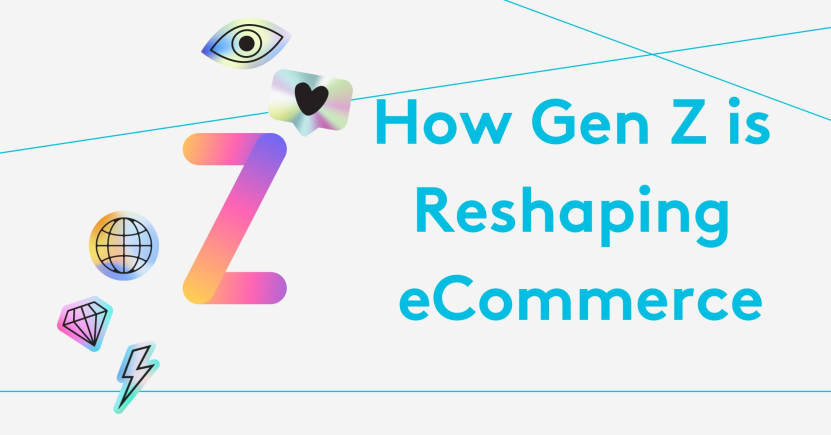
eCommerce trends are now determined by a new generation of shoppers that is reshaping the way we shop.
The future of eCommerce now depends on the adoption of Gen Z and the generations coming after them. Gen Z, or Generation Z, is the demographic born between 1997-2010 who are growing up in an always-on digital world.
Gen Z consumers expect a hyper-personalized experience that is tailored to their specific needs and interests. They are more tech-savvy than every generation before them, and they have grown up with mobile devices as the primary source of information. This dynamic has shaped the way they shop in a big way.
Key takeaways
- Gen Z are environmentally and socially conscious consumers who need transparent brands.
- Gen Z are social media butterflies who want and need to connect with brands in a more genuine way.
- Brands need to create an omnichannel experience to capture a mobile native generation.
- TikTok made me buy it is the ultimate representation of the gen Z generation.
- Understanding and adapting to Gen Z and the generation coming after that will determine your business success.
On this page:
The Rise of Gen Z Shoppers
The rise of Gen Z online shoppers has been a hot topic for years now. It’s a large cohort, representing about 21% of the U.S. population and $360 billion in buying power, according to Bloomberg. In short, they are big business. With this projected growth, many brands are looking at ways they can better cater to this demographic's needs.
The internet has radically changed the way every generation has shopped, but this is especially true for Gen Z consumers who came of age in an era where everything is available at our fingertips via technology like smartphones and tablets.
In addition, the rise of social media and mobile devices has made it possible for people worldwide to buy and sell products, services, and ideas with a few clicks of their mouse or taps on their phones.
Consumers are now more informed than ever and have greater access to product information. As such, Gen Z has developed different shopping habits than previous generations.

Growth Marketing Hacks
We share how we grew from 4-figure to 6-figure traffic in just one year.
How are Gen Z Shopping Habits Differ
Here are some key differences between Generation Z and the older generations:
The members of Generation Z are the first true omnichannel consumers who will use whichever method is most convenient at the time and across any and all channels to find what they're looking for.
Gen Zers are a harder sale. Around 50% of Millennial shoppers report trusting businesses, according to a Salesforce report, whereas only 42% of members of Gen Z do. To attract Generation Z, brands must make extra efforts to earn their trust.
Social media plays a huge role. Around 64% of Gen Z report Instagram as a source of shopping inspiration, compared to around 39% of millennials. We will explore more about social media and Gen Z in the next section.
Gen Z are also more conscious shoppers. They care about sustainability and the impact their shopping behaviors have on the planet. Shopping is more belief-driven for this generation which means that brand will need to be transparent and active about their social and environmental stance to attract them.
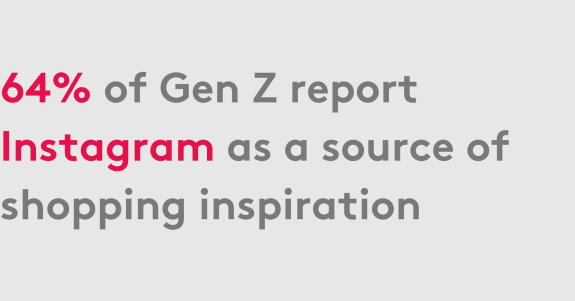
The Influence of Social Media on Generation Z
Generation Z is the most social media-savvy generation and depends on it as their main entertainment, information, and communication source. The majority of Gen Z'ers said they use social media to inform their opinions on brands and products.
Just think about these stats:
- More than 80% of Gen Zers feel that social networks like Facebook, Twitter, and Instagram influence what they buy.
- As many as 61% of Gen Z follow businesses they like on social media, whereas just about a third of consumers from previous generations do.
And why not? Generation Z has grown up with social media and is constantly bombarded with advertisements, whether on TikTok, Facebook, or Instagram. Some social media platforms are taking advantage of this.
By facilitating marketers with tools like Spark Ads, a native ad format that lets brands use organic uploads from artists on the platform in ad campaigns, TikTok, home of the infamous #TikTokMadeMeBuyIt hashtag with over 10 billion views, has been capitalizing on viral purchasing.
Social commerce had become an integral part of eCommerce and brands need to fully embrace this trend by creating a true omnichannel strategy.
How Are Retailers Adapting to Gen Z?
Gen Z shoppers are less loyal than older generations, which makes it harder for companies to retain them as customers over time. To keep these young shoppers engaged, brands need to constantly innovate and cater to the preferences of this highly diverse and profitable generation.
How are retailers doing this? Here are just a few ways:
Providing Good UX:
Although Generation Z prefers social media channels, they also frequent brand websites. Around half of Gen Z shoppers learn about new brands and goods from a specific store's website. Brands are focusing on providing a seamless user experience since, according to IBM research, 60% of Gen Z shoppers will not use a retail app or website if it is slow or complicated to use.
Offering a Technology-Enhanced Experience: Gen Z prefers a seamless shopping experience, which is often enhanced with technology. From using AR to offering omnichannel experiences, companies are finding ways to use cutting-edge technology to their advantage. However, not making technology complicated is also important, with 30% of Generation Z reporting that seamless experiences, such as an easy online checkout process, are crucial to them.
Also, brands are now using technology like chatbots and virtual assistants to improve customer service without having dedicated staff members available 24/7 for support questions.
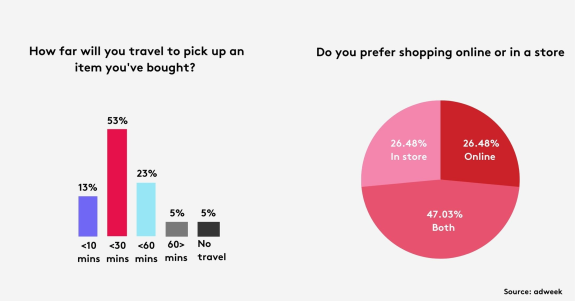
Interacting Across Multiple Touchpoints:
It’s not enough to just have a website. From online shopping to checkout to in-store experiences, brands are now aiming to provide a seamless experience across all touchpoints—retail stores, mobile apps, and social media platforms— to increase brand awareness and attract Gen Z customers.
Merging Online and In-Store Experiences:
Gen Z wants to shop in physical stores but also wants options for online purchases without waiting for shipping or paying an expensive pickup fee at a brick-and-mortar store. Instead, they want one-stop shopping where they can find everything they need in one place — whether it's online or in-store. Some retailers cater to this need by offering options to buy online and pick up in-store on the same day.
Partnering with Influencers:
Influencer marketing has become an effective way for brands to reach this new generation because they trust their peers more than advertisements or celebrities. Gen Zers see influencers as genuine sources of information about products, services, brands, and experiences; their recommendations carry far more weight than those of traditional advertising campaigns. Nearly half (44%) of Generation Z has purchased a product based on a recommendation from a social influencer, compared with 26% of the general public.
How Brands Can Better Engage With Gen Z
So how does this affect how companies should market themselves? Gen Z consumers have high expectations regarding their relationship with brands: they want experiences, not just products; they expect the best price available on any given item, and they demand that their favorite brands be socially responsible.
What changes can brands make now to start engaging Generation Z? Here are a few ideas:
Provide Shorter, More Impactful Messaging
Messaging needs to be tailored more precisely towards younger audiences (i.e., using emojis), and content should be shorter. Gen Z prefers shorter-form content such as tweets or TikTok videos.
Be Social Media native
It's also important for your brand to be active on social media. When looking to try out a new brand, 48% of Generation Z shoppers say that social media activity is an influential factor. This might seem obvious, but it means that there is an opportunity for brands that haven't been paying attention to their social media presence for a while.
It also means that if your brand isn't already engaging with Gen Z on social media, now is the time to start! Make sure you're posting regularly and engaging with users by responding directly or asking questions to get them interacting with your posts.
Prioritize Corporate Social Responsibility
You’ve also probably heard that Gen Z is more brand-conscious than previous generations. This has been proven time and time again in research, as well as through the numbers of consumers who are loyal to specific brands or product categories that are geared towards social responsibility. But it may come as a surprise to learn just how high these expectations actually are.
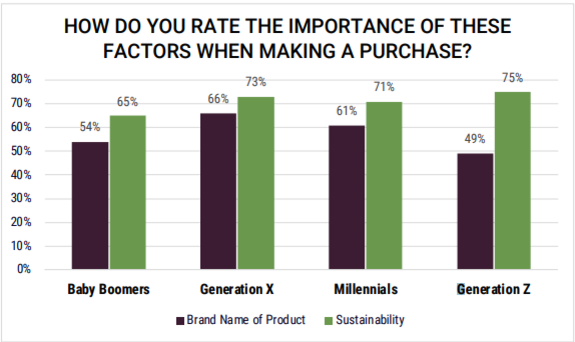
Research conducted by Forrester shows that 51% of Gen Z shoppers conduct extensive online research on a company before making a purchase to ensure it shares their values on corporate social responsibility.
Retailers and companies with an impact-driven mission, like giving back to the community, protecting the environment, and fighting for social justice, will win over Generation Z customers as long as they do what they promise.
Stay Adaptable For Success
We’ve covered a lot of ground here, but it’s important to remember that the future is always changing. The generations are constantly evolving, and so will their shopping habits and demands. Businesses must be aware of these shifts and adapt their strategies accordingly. It’s easy to get caught up in what worked yesterday and assume it will work tomorrow—but if you want your business to stay relevant (and profitable), you have got to stay on top of these trends now more than ever before.
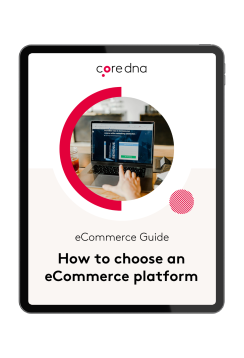
How to Choose the right eCommerce Platform
Definitive guide to choosing an eCommerce platform.













